This past week, I gave a presentation to a group interested in a
particular type of renewable energy–solar energy that is deployed in
space, so it would provide electricity 24 hours per day. Their question
was: how does the production cost of electricity really need to be?
I gave them this two-fold answer:
1. We are hitting something similar to “Peak Oil” right now.
The symptoms are the opposite of the ones that most people expected.
There is a glut of supply, and prices are far below the cost of
production. Many commodities besides oil are affected; these include
natural gas, coal, iron ore, many metals, and many types of food. Our
concern should be that low prices will bring down production, quite
possibly for many commodities simultaneously. Perhaps the problem should
be called “Limits to Growth,” rather than “Peak Oil,” because it is a
different type of problem than most people expected.
2. The
only theoretical solution would be to create a huge supply of renewable
energy that would work in today’s devices. It would need to be cheap to
produce and be available in the immediate future. Electricity
would need to be produced for no more than four cents per kWh, and
liquid fuels would need to be produced for less than $20 per barrel of
oil equivalent. The low cost would need to be the result of very sparing
use of resources, rather than the result of government subsidies.
Of
course, we have many other problems associated with a finite world,
including rising population, water limits, and climate change. For this
reason, even a huge supply of very cheap renewable energy would not be a
permanent solution.
This is a link to the presentation: Energy Economics Outlook. I will not attempt to explain the slides in detail.
–
Some
people falsely believe that energy supplies are “only needed for
industrial purposes.” Energy supplies are, in fact, needed for many
things: cooking our food, keeping our homes warm, and creating the
clothing we expect to wear. It would be impossible to feed, house, and
clothe 7.3 billion people without supplemental energy of some kind.
–
Slide
4 suggests that the world economy is heading into recession, because
recent growth in the use of energy supplies is very low recently.
Another sign that we are headed into recession is that fact that CO2 emissions fell in 2015.
They usually don’t fall unless a global crisis exists. Emissions fell
when the Soviet Union collapsed in 1991, and they fell during the
economic crisis in 2008. Perhaps the world economy is hitting headwinds
that are not being picked up well in conventional calculations of GDP
growth.
Slide
5 shows a chart I put together, using data from several different
sources, showing how growth in energy consumption has compared with
growth in GDP. Growth in GDP tends to be somewhat higher than growth in
energy consumption.
Economic growth (and growth in energy use) was
low prior to 1950. There was a big jump in economic growth immediately
after World War II, in the 1950-65 period. There was almost as much
growth in the 1965- 75 period. Since 1975, economic growth has generally
been slowing.
Between
the years 1900 and 1998, the use of electricity rose (black line) as
the cost of electricity fell (purple, red, and green lines). Electricity
consumption could rise because it was becoming more affordable. Rising
electricity consumption allowed the economy to make more goods and
services. Workers (with the use of electricity) were becoming more
efficient, so wages could rise. With higher wages, workers could afford
more products that used electricity, such as electric lights for their
homes and radios.
If electricity prices had risen instead of
fallen, it seems doubtful that this pattern of rising consumption could
have taken place.
The
comments in Figure 7 represent my own view. It is based on both
theoretical considerations and historical relationships. Many who have
studied the economy believe that energy is important for economic
growth. In my view, the real need is for cheap-to-produce energy, not
just any energy. If cheap energy is not really available, then adding
more debt can somewhat make up for the high cost of energy production.
Debt
is important because it makes goods affordable that would not otherwise
be affordable. For example, having a loan for a house or a car makes a
huge difference regarding whether such an item is affordable. Even
when energy products are cheap, debt seems to be needed to get oil or
coal out of the ground, or to make a new device such as a wind turbine.
Part of the problem is the cost of the capital equipment needed to
extract the oil or coal, or the cost of the wind turbines themselves.
Another part of the problem is paying for factories to make devices that
use the energy product. A third problem is making it possible for users
to afford the end products, such as houses and cars. It is much easier
to borrow the money for a new tractor, and pay the loan off as the
tractor is put to use, than it is to save money in advance, using only
the funds earned when farming with simple hand-held tools.
I
mentioned the need for $20 per barrel oil on Slide 7. This is a very
inexpensive price. Slide 8 shows that the only time when oil prices were
that low was prior to the mid-1970s. The cost of oil production is now
far above $20 per barrel. The sales price now is about $37 per barrel.
This is below the price producers need, but still above my target price
level.
Slide
9 explains where I got my $20 per barrel price target. Back prior to
1975–in other words, back when oil prices were generally low, $20 per
barrel or less–the increase in debt more or less corresponded to the
growth in GDP. Once prices rose above $20 per barrel, the amount of debt
needed to produce a given amount of GDP growth rose dramatically.
Slide
10 shows interest rates for US debt with 10-year maturity. These
interest rates often underlie mortgage rates. As interest rates fall,
homeowners can afford increasingly expensive homes. If shorter-term
interest rates fall as well, auto loans become cheaper too.
The
value to society of a barrel of oil is determined by how many miles it
can make a diesel truck go, or how far it can make an airplane fly. This
value to society is more or less fixed. The only change is the small
increment each year from efficiency changes, making a barrel of oil “go
farther.”
In the 2000-14 period, the cost of new oil production
was increasing very rapidly–by more than 10% per year, by some
estimates. The rising cost of oil production occurred much more quickly
than efficiency changes. The result was a falling difference between the
value to society and the cost of production. When oil prices are high,
oil-importing nations tend to suffer recession. When oil prices are low,
oil-exporting nations find it hard to collect enough taxes to support
their many programs.
The
fact that we need energy for economic growth means that we somehow must
obtain this energy, even if doing so costs more. The big run-up in oil
prices is a major reason for the historical run-up in debt levels.
China’s big build-out of homes, roads, and factories was also financed
by debt.
The higher cost of oil affects many things that we don’t
think are related, including the cost of building new homes, the cost of
building cars, and the cost of building roads. As consumers are forced
to buy increasingly expensive homes and cars, and as governments find
that the building of roads is increasingly expensive, more debt is used.
The terms of loans are often longer as well, to hold down monthly
costs.
If we still had cheap oil, this oil by itself could provide
a “lift” to the economy. An increasing amount of debt can “sort of”
compensate for the absence of cheap oil.
The problem we encounter
is that neither cheap energy nor the continued run-up of debt is
sustainable. Cheap energy tends to change to expensive energy, because
we use the cheapest sources first. The continued debt run-up becomes
more and more difficult to handle, unless interest rates fall lower and
lower. At some point, interest rates can’t fall enough, and the whole
pile of debt tends to collapse, like a Ponzi scheme.
I
gave this talk on December 15; the first increase in interest rates
took place on December 16. With rising interest rates, we suddenly have
“the prop” that was attempting to hold up economic growth taken away.
We
need ever expanding debt–that is, debt rising faster than GDP levels–to
try to keep the world economy growing, so that the whole pile of debt
doesn’t fall over and collapse. If we are to have non-debt growth in the
future (because we are reaching limits on debt), it needs to again come
from cheap energy alone. We need to get back to something similar to
the low-cost energy that fueled the economy before the debt run-up.
Most
of us have heard the Peak Oil story, and assume it represents a
reasonable view of where we are headed. I think it is close to 180
degrees off course.
M.
King Hubbert talked about a very special situation–a situation where
another cheap, abundant fuel took over, before fossil fuels began to
decline. In this particular situation (and only
in this particular situation), it is reasonable to assume that
production will follow a symmetric “Hubbert Curve,” with half of the
production coming after the peak, and half beforehand. Otherwise, the
down slope is likely to be much steeper. Many peak oilers missed
this important point. We certainly are not in a situation today where
another very cheap fuel has taken over.
Slide
16 represents what I see as the predominant “Peak Oil” view of the oil
limits situation. Some individuals will of course have different
opinions.
Peak
oilers certainly did get part of the story right–at some point, the
cost of oil extraction would rise. What they got wrong was how the whole
scenario would play out. It turns out, it plays out pretty much the
opposite of what most had supposed–that is, with stagnating wages, loss
of buying power, and prices of all commodities falling because of lack
of “demand.”
We seem to be hitting energy limits, right now. That
is why debt is such a problem, and it is why prices of many commodities,
including oil, are far too low compared to the cost of production.
Slide
18 shows the fall of commodity prices up through 2014. The fall in
commodity prices has continued in 2015 as well. The story we frequently
hear is about low oil prices, but there is also a problem with low
natural gas prices. Coal prices are low now too, and, in fact, many coal
producers are near bankruptcy. Prices of iron ore, steel, copper, and
many other metals are very low, as are prices of many kinds of staple
foods traded internationally.
The
problem with low commodity prices is that there are many loans that
have been taken out to support their production. There is a significant
chance of default, if prices remain low. Also, low commodity prices
affect asset prices–for example, prices of coalmines, or prices of
agricultural land. As the prices of commodities fall, the price of the
land used to produce those commodities falls. When this happens, it
becomes difficult to repay the loans on the property.
Peak
Oilers were right about the cost of production continuing to rise. What
they missed was the fact that prices would at some point fall behind
the cost of production because of affordability issues. Low prices would
then bring the economy down, as it did in the Depression in the 1930s,
and in quite a few earlier collapses.
I think of increased demand,
provided by debt, as being like a rubber band. Just as a rubber band
can stretch for a while, the price of oil can rise for a while, fueled
by more and more debt. At some point, debt can’t rise any higher–the
rate of return on investments made using debt is too low, and defaults
become too frequent. Instead of continuing to rise, commodity prices
fall back. Market prices of commodities fall to much lower prices than
the costs of production.
In order to get oil prices up higher, the
wages of factory workers, restaurant workers, and other non-elite
workers need to rise, so that they can afford to buy nice cars and nice
homes. Commodities of many types are used both in making homes and cars,
and in operating them.
If
space solar (or for that matter, any renewable energy) is to be
helpful, it needs to be very cheap, so that products made using
renewable energy are affordable.
If the replacement energy source
is cheap enough, perhaps there will not be a huge run-up in debt to GDP
ratios, to finance the new devices used to provide electricity or other
energy.
We are encountering problems now, so we need a replacement now, not 20 or 50 years from now.
We
cannot expect the cost of electricity production to be more than the
current wholesale selling price of electricity. Thus, it needs to be
four cents per kWh or less. Ideally, the price of electricity should be
falling, as in Slide 6.
Another consideration is that we need to
be able to operate our current vehicles using a liquid fuel, made with
electricity, because of the time and materials involved in switching
over to electric vehicles. This requirement likely reduces the maximum
cost of electricity even below four cents per kWh.
It
is possible to run into many different kinds of limits, over a period
of time. In my view, the first limit we reach is an affordability limit.
We can tell we are hitting this limit when high prices reverse to low
prices, as they have done since 2011. The fact that prices are
continuing to fall is especially worrisome.
There
has been a popular myth that it is OK for energy costs to rise. We will
just choose the least costly of the high-priced alternatives. This
approach doesn’t really work, because wages do not rise at the same
time.
Also, we have to compete with other countries. If their
energy costs are cheaper, their manufacturing costs are likely to be
lower.
If
conditions existed that allowed oil prices to rise endlessly (in other
words, rising wages of non-elite workers together with debt that could
spiral ever higher, as a percentage of GDP), we wouldn’t really have a
problem–we could afford increasingly expensive substitutes.
Unfortunately, the story of ever-rising oil prices is simply fiction.
It is a pleasant story, but not really true. I explain some of the
issues further in “Why ‘supply and demand’ doesn’t work for oil.”
http://www.theenergycollective.com/gail-tverberg/2304110/we-are-peak-oil-now-we-need-very-low-cost-energy-fix-it

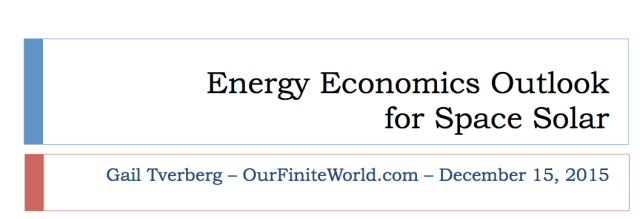
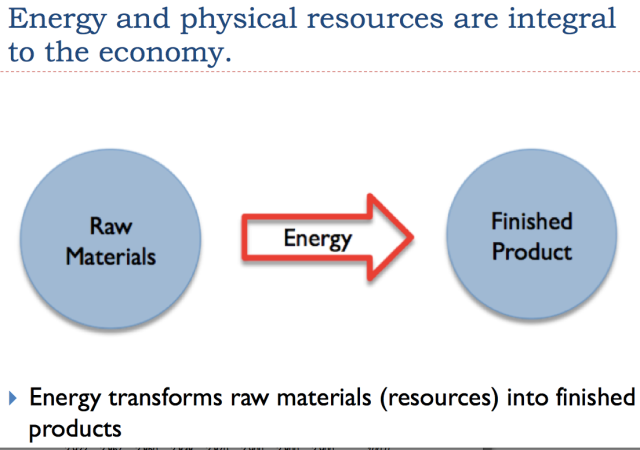

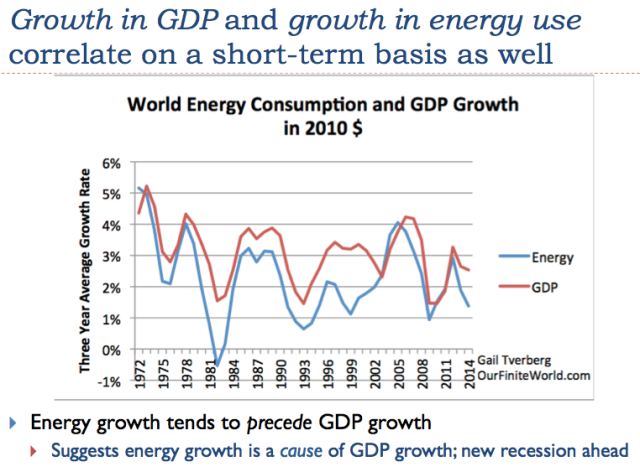
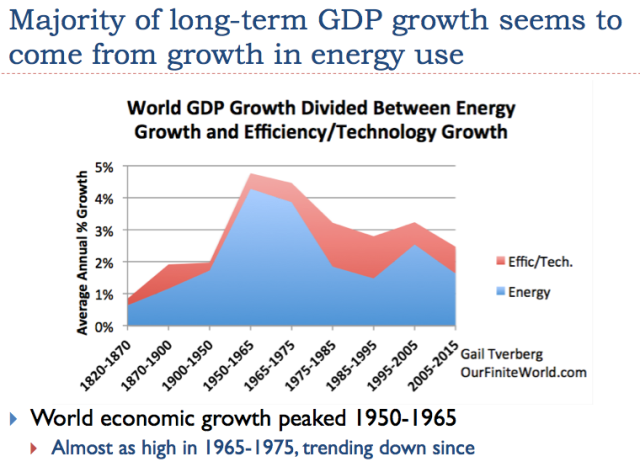


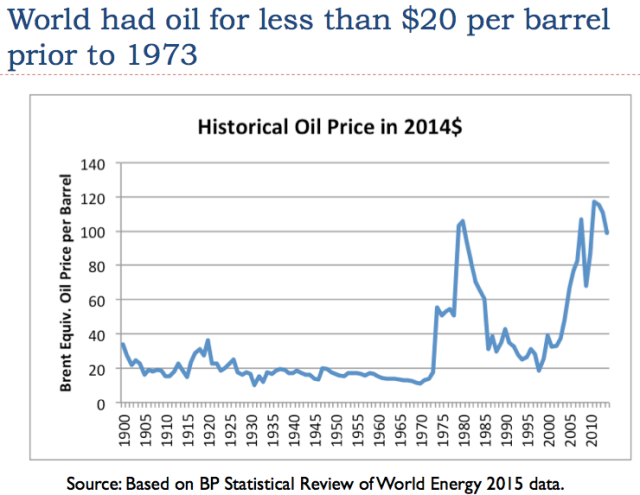
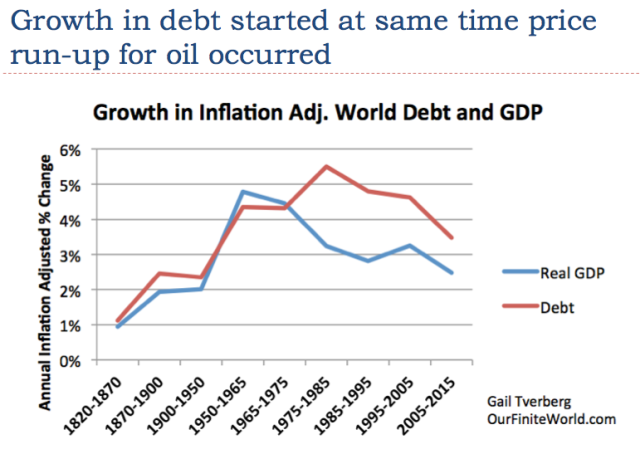
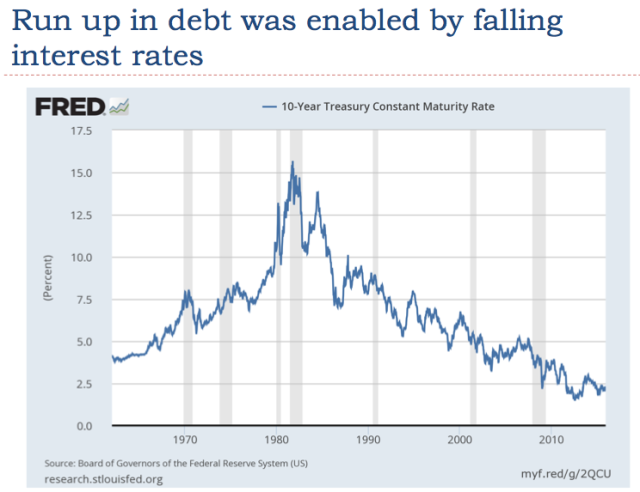
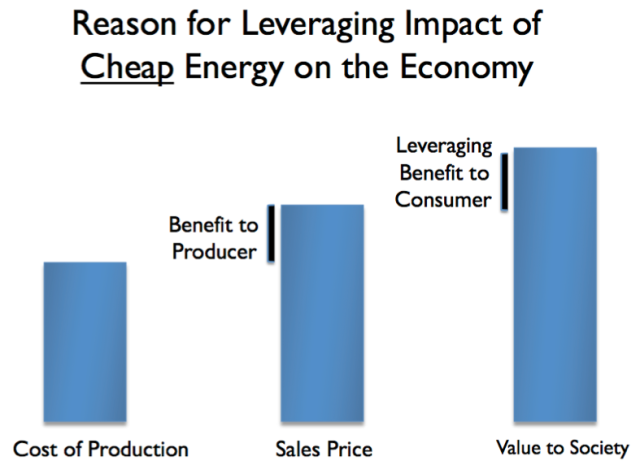
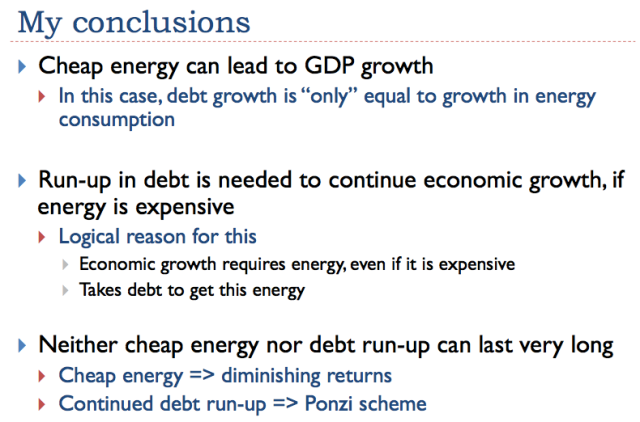
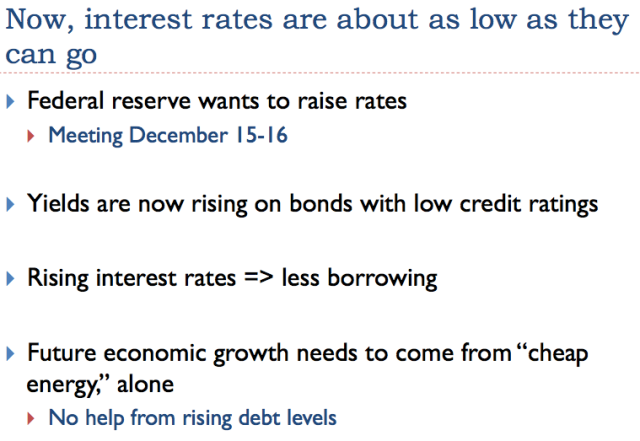
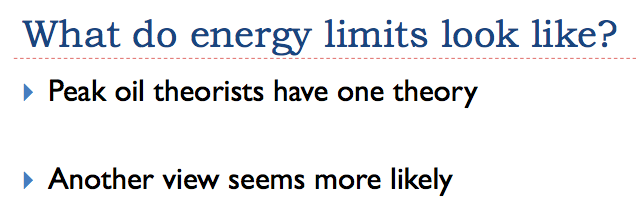
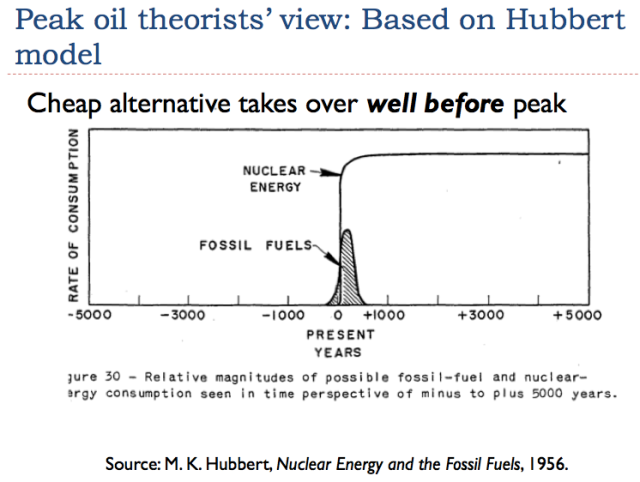
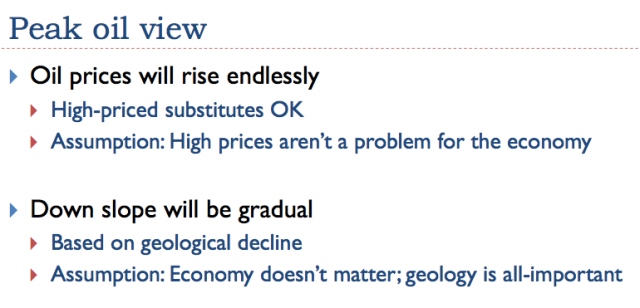
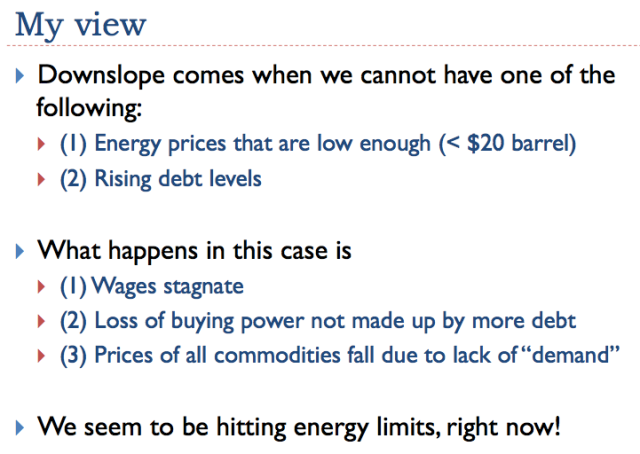
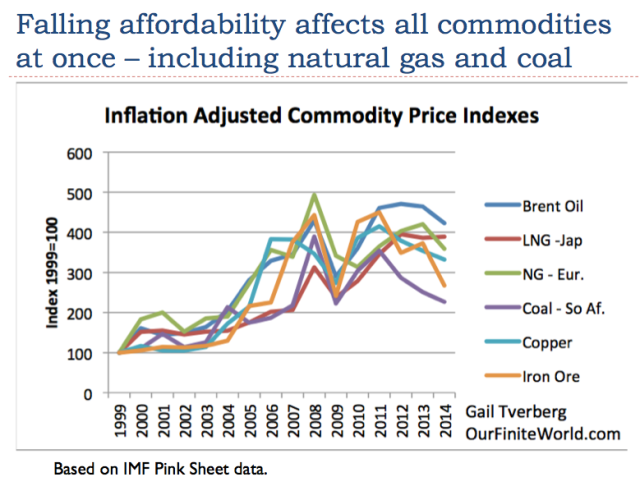
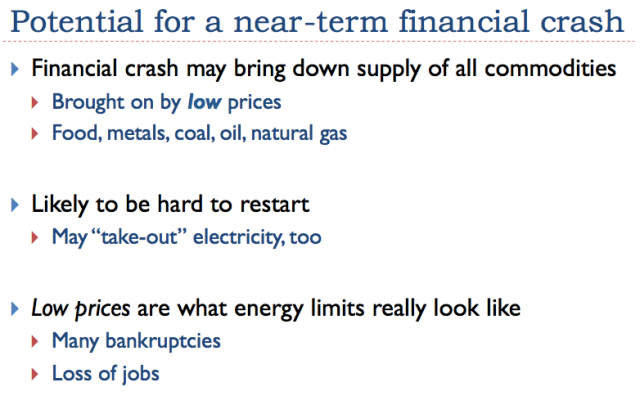
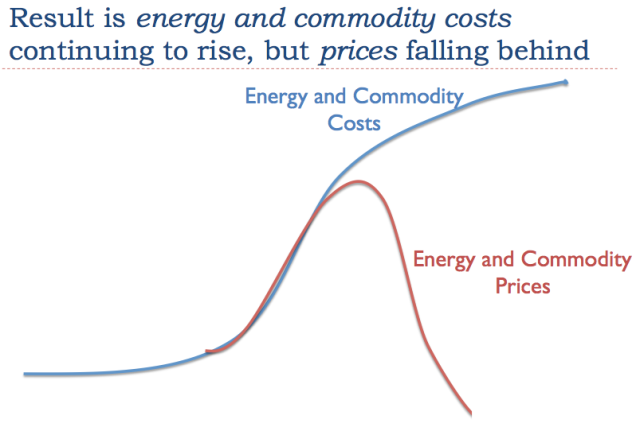
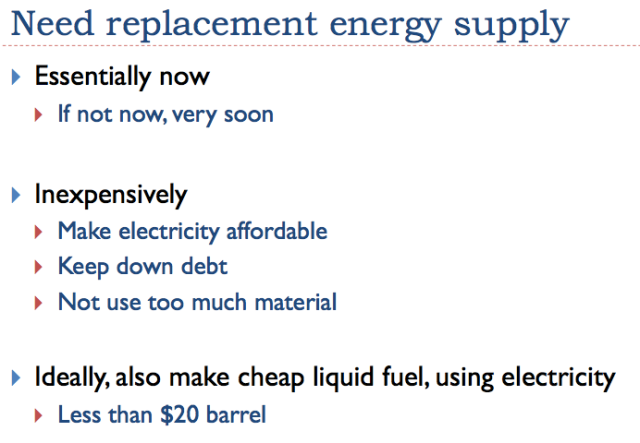
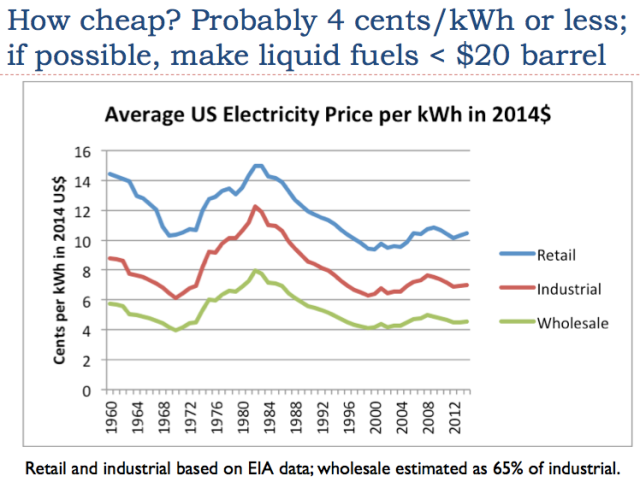
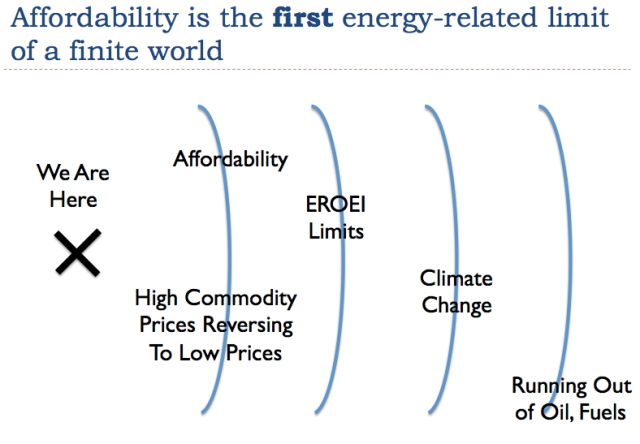

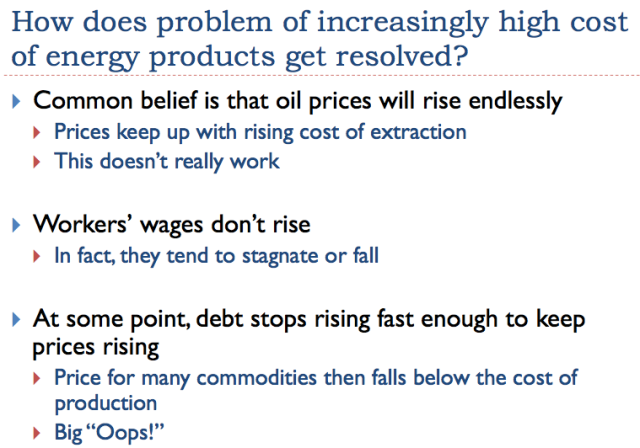
No comments:
Post a Comment